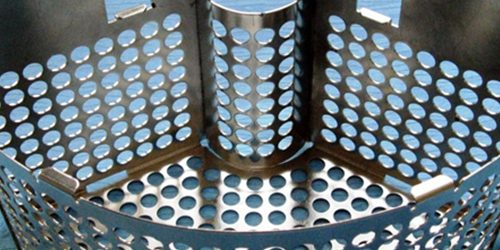
When choosing appropriate automotive parts according to corrosion resistance testing standards for automotive parts, the following aspects can be considered:
**I. Clarify the usage environment**
1. Consider geographical regions: Climate conditions vary greatly in different regions. For example, in coastal areas, the air humidity is high and the salinity is large. In acid rain areas, there are more corrosive substances. If the car is mainly used in these areas, parts with stronger corrosion resistance need to be selected.
2. Vehicle usage scenarios: If the vehicle often runs on harsh road conditions such as muddy roads and gravel roads, parts are more likely to be worn and corroded. In addition, for some special-purpose vehicles such as engineering vehicles and off-road vehicles, the requirements for corrosion resistance of parts are also higher.
**II. Understand testing standards**
1. Salt spray test standards: According to different types of salt spray tests, understand their corrosiveness and application scopes. Neutral salt spray tests are relatively mild and suitable for testing parts in general environments. Acidic salt spray tests and copper-accelerated salt spray tests are more corrosive and can be used to simulate the corrosion resistance of parts in extremely harsh environments.
2. Cyclic corrosion test standards: Understand the characteristics of different cyclic corrosion test methods in the ISO 11997 series of standards and judge whether they can truly reflect various environmental conditions that cars may encounter in actual use. For example, if the vehicle is often used in an environment where humidity, dryness, and salt spray alternate, parts that have passed the corresponding cyclic corrosion tests need to be selected.
3. Coating adhesion and corrosion resistance standards: For parts with coatings such as paint and anti-corrosion coatings, pay attention to the ISO 2409 and ISO 4628 series of standards. Evaluate the bonding force between the coating and the part substrate by means of grid cutting tests, and judge whether the corrosion resistance of the coating meets the requirements according to the evaluation methods of corrosion grades such as blistering, rusting, and peeling of the coating.
4. Material standards: Be familiar with international standards for different materials, such as the regulations of ISO 15510 for stainless steel materials and the ISO 6361 series of standards for aluminum alloy materials. Understand various indicators such as the chemical composition, mechanical properties, and corrosion resistance of materials, and select suitable materials according to actual needs.
**III. Check product certifications and test reports**
1. Certification marks: Choose automotive parts with relevant certification marks, such as ISO certification and industry association certification. These certification marks usually represent that the product has undergone strict testing and review and meets certain quality standards.
2. Test reports: Request suppliers to provide test reports for parts to understand their performance in various corrosion resistance tests in detail. Test reports should include information such as test methods, test conditions, and test results so that users can evaluate and compare.
**IV. Consider the balance between cost and performance**
1. Corrosion resistance and price: Generally speaking, parts with stronger corrosion resistance may have higher prices. When choosing, it is necessary to weigh according to actual needs and budgets. If the vehicle usage environment is relatively harsh, appropriate investment in corrosion resistance can be increased; if the usage environment is relatively good, parts with better cost performance can be selected.
2. Long-term performance and short-term cost: Consider the service life and maintenance cost of parts. Although some parts with high corrosion resistance are relatively expensive, they may reduce the frequency of maintenance and replacement in the long-term use process, thereby reducing the overall cost. At the same time, it is also necessary to consider whether the performance of parts meets other requirements of the vehicle, such as strength and reliability.
**V. Consult professionals and refer to user evaluations**
1. Professional engineers and technicians: Consult professionals such as car manufacturers, maintenance technicians, and material experts to understand their experience and suggestions when choosing automotive parts. They can provide targeted selection plans according to specific usage situations and needs.
2. User evaluations and reputations: Refer to the evaluations and reputations of other users to understand the corrosion resistance performance of different brands and models of automotive parts in actual use. User feedback information can be obtained through channels such as online forums and car evaluation websites. In short, choosing appropriate automotive parts according to testing standards requires comprehensive consideration of factors such as usage environment, testing standards, product certifications, cost and performance balance, and the opinions of professionals and users to ensure that the selected parts can meet the usage requirements and corrosion resistance needs of cars.





